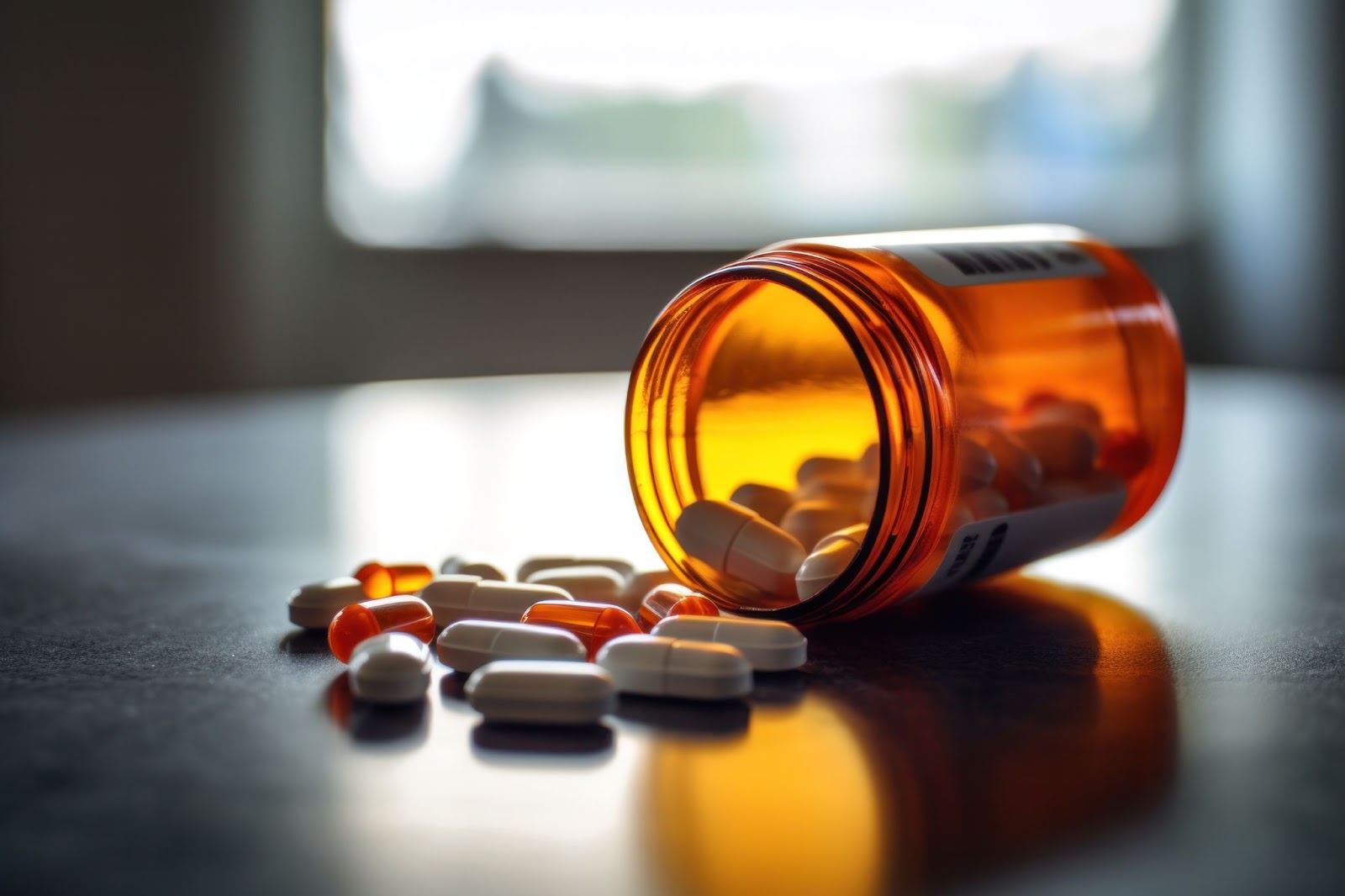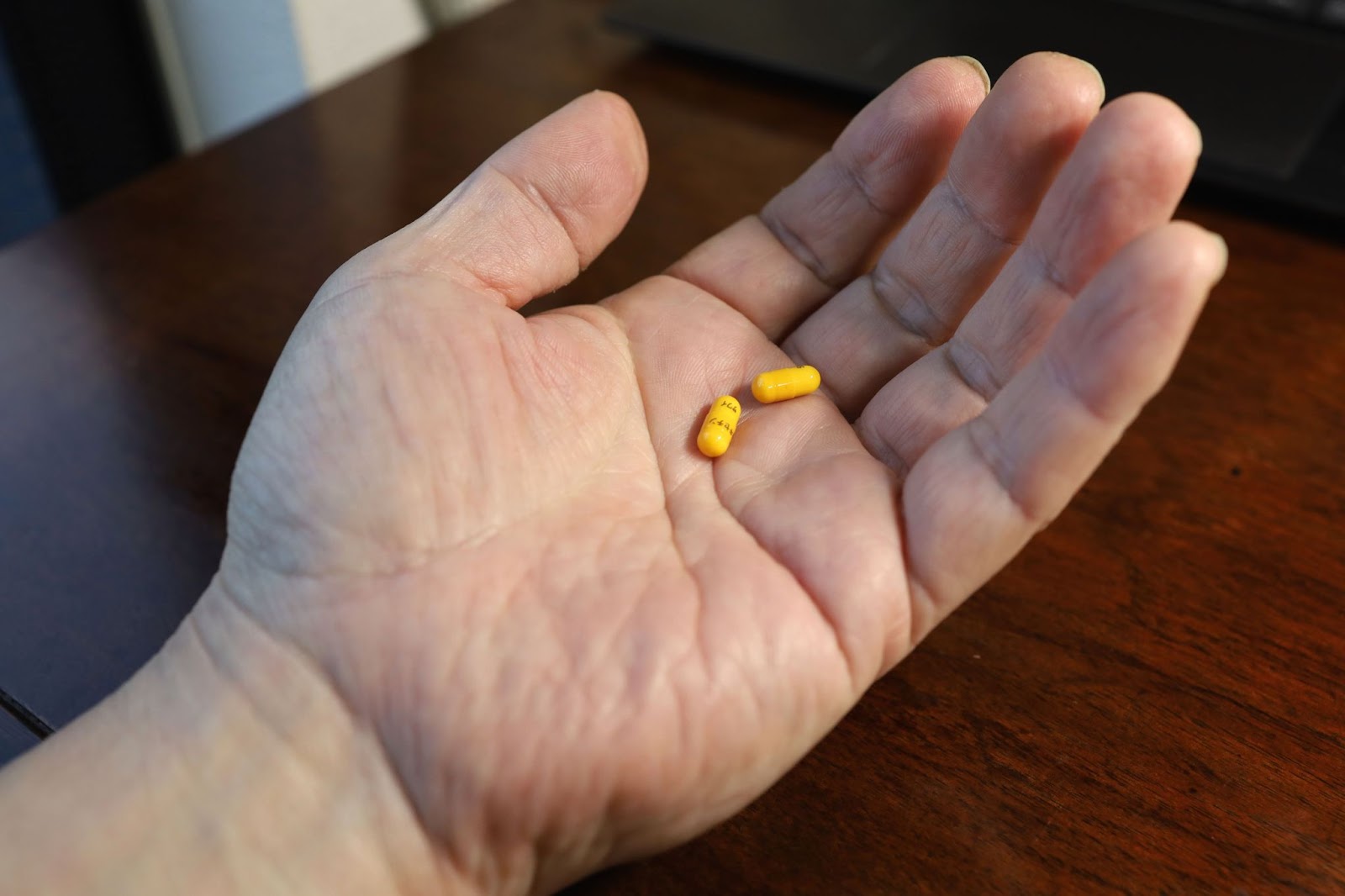Are you or someone you know grappling with ADHD and searching for the most effective treatment options? While medication has long been a staple in managing ADHD, TMS therapy has emerged as a compelling alternative, offering new hope to those seeking different solutions.
In this blog, we’ll dive deep into TMS therapy versus traditional medication, exploring the advantages, potential drawbacks, and overall effectiveness of each treatment.
Whether you were recently diagnosed r and wondering what is the best treatment for ADHD, or are looking to enhance your current treatment plan, join us as we compare these two approaches to find out which might be the best fit for your needs.
Let’s start by looking at what ADHD is.

What is ADHD?
Attention Deficit Hyperactivity Disorder, or ADHD, is a neurological condition that affects how the brain organizes and regulates attention, impulse control, and activity levels. Rather than occasional distractibility or restlessness, ADHD involves persistent patterns of inattention and/or hyperactivity‑impulsivity that interfere with daily functioning.
ADHD typically begins in childhood, with symptoms often becoming noticeable around school age. ADHD affects approximately 11% of children, and for many, it continues into adulthood, where prevalence is estimated at 2 to 5%. While the symptoms can look different across age groups, the underlying cognitive challenges remain consistent.
Children with ADHD may struggle with following instructions, staying seated in class, or completing assignments. ADHD in adults often manifests as disorganization, difficulty prioritizing, or impulsive decision-making in professional or personal settings. Across the lifespan, individuals with ADHD frequently experience impairments in executive functioning—skills such as planning, task initiation, time management, and emotional regulation.
Traditional ADHD Medications
ADHD is highly treatable, and several approaches can help manage symptoms. Aside from behavior therapy, one of the most established methods is medication. For many individuals, pharmacological treatment—especially when combined with behavioral interventions—can significantly improve focus, impulse control, and day-to-day functioning.
There are two types ofADHD medications:: stimulants and non-stimulants.
Stimulants, like methylphenidate (Ritalin, Concerta) and amphetamines (Adderall, Vyvanse), are the most commonly prescribed because they boost concentration and help dial down impulsivity and hyperactivity by increasing the availability of certain brain chemicals, such as dopamine and norepinephrine. For many patients, stimulants provide rapid symptom relief and are often considered first-line treatments.
Non-stimulant medications, such as atomoxetine (Strattera) and guanfacine (Intuniv), are typically used when stimulants aren’t well-tolerated or ineffective. These medications target similar neural pathways but work more gradually and are not associated with the same risk of misuse.
While medication can be highly effective, it’s not without side effects. Stimulants may cause decreased appetite, sleep disturbances, irritability, or elevated heart rate. Non-stimulants may lead to fatigue, dizziness, or gastrointestinal discomfort. Close medical supervision is essential to monitor response, adjust dosing, and assess for potential adverse effects.
Medication decisions should always be made in partnership with a qualified mental health professional, based on a full understanding of the individual’s symptoms, medical history, and lifestyle. No single medication works for everyone—but for many people, finding the right treatment can be life-changing.
Let’s take a closer look at each type of medication offered for ADHD.

1. Methylphenidate
Common brands: Ritalin, Concerta, Metadate
Advantages:
- Helps improve focus and reduce hyperactivity.
- Helps control impulsive behaviors.
- Fast-acting.
Downsides and risks:
- Usual side effects include trouble sleeping, less appetite, headaches, and sometimes irritability.
- Might increase heart rate and blood pressure.
- A risk of dependency, especially if misused.
2. Amphetamines
Common Brands: Adderall, Vyvanse
Advantages:
- Works very well at increasing concentration.
- Helps decrease disruptive behaviors.
- Extended-release versions mean fewer doses throughout the day.
Downsides and risks:
- Potential sleep problems and decreased appetite.
- Might cause moodiness and a quicker heartbeat.
- Increased risk of dependency.
- High doses might lead to heart-related issues.
3. Dextroamphetamine
Common Brands: Dexedrine
Advantages:
- Good for improving attention span.
- Helps lower hyperactivity and impulsivity. .
Downsides and risks:
- May reduce appetite, cause dry mouth, and lead to weight loss.
- Might cause restlessness in some people.
- High risk of abuse, particularly in adults.
- Long-term use can lead to heart complications.
4. Lisdexamfetamine
Common Brands: Vyvanse
Advantages:
- Designed to reduce abuse potential (needs to be processed in the body to activate).
- Keeps focus and attention steady throughout the day.
- Don’t have to take it as often because it lasts longer.
Downsides and risks:
- Possible side effects include less appetite, sleeplessness, and an increased heart rate.
- May cause feelings of anxiety.
- Lower risk of abuse compared to other amphetamines, but still something to be mindful of.
Non-stimulant medications for ADHD
1. Atomoxetine
Common Brand: Strattera
Advantages:
- Works differently from stimulants by specifically targeting norepinephrine levels in the brain, which helps increase attention and control impulsiveness.
- Doesn’t have the same abuse potential as stimulants, making it a good choice for long-term use.
- Effective continuously throughout the day, so no need for multiple doses.
Downsides and Risks:
- Can cause nausea, fatigue, and mood swings, especially when starting the treatment.
- May increase heart rate and blood pressure, though generally less so than stimulants.
- Takes longer to see effects compared to stimulants—sometimes several weeks.
2. Guanfacine
Common Brands: Intuniv (extended-release), Tenex (short-acting)
Advantages:
- Often used for its ability to reduce hyperactivity and improve attention.
- May also help with reducing anxiety and improving sleep, which are sometimes issues for those with ADHD.
- Extended-release versions offer convenient once-a-day dosing.
Downsides and risks:
- Common side effects include drowsiness, fatigue, and, sometimes, headache.
- Sometimes causes a drop in blood pressure and a slow heart rate, which needs monitoring.
- Effects on cognitive improvement might be less pronounced than those seen with stimulants.
3. Bupropion
Common Brand: Wellbutrin
Advantages:
- Although primarily used as an antidepressant, it’s effective for ADHD due to its influence on dopamine and norepinephrine.
- Has a stimulant effect but with less potential for abuse.
- May improve mood and focus, which can be helpful for those with coexisting depression.
Downsides and risks:
- Possible side effects include sleep disorders, headaches, and in rare cases, seizures.
- May not be as effective in managing all ADHD symptoms as the traditional stimulants.
- Interaction with other medications is a potential concern, requiring careful management.
4. Clonidine
Common Brand: Kapvay (extended-release), Catapres (short-acting)
Advantages:
- Particularly good at managing hyperactive and impulsive behavior.
- Can also be used to improve sleep, which is beneficial for individuals with ADHD who struggle with insomnia.
- The extended-release form allows for once-a-day dosing.
Downsides and risks:
- Sometimes leads to drowsiness, fatigue, and dizziness.
- Must be tapered off slowly to avoid withdrawal symptoms.
- May lower blood pressure and heart rate, requiring monitoring.
Non-stimulant medications provide valuable alternatives to stimulants, especially for individuals who may experience significant side effects or for whom stimulants are contraindicated. They typically have a lower risk of abuse and often address both ADHD symptoms and co-occurring conditions like anxiety disorders or sleep disturbances.
However, they might not work as quickly or strongly as stimulants, so it’s important to have realistic expectations and work closely with a healthcare provider to find the most effective regimen.
Non-Medication ADHD Treatments: An introduction to TMS therapy
TMS is a non-invasive treatment that uses focused magnetic fields to stimulate specific areas of the brain. While it is specifically approved for major depressive disorder, TMS is also being studied for its potential benefits in managing ADHD symptoms—particularly in those with executive function challenges.
In ADHD protocols, the target is typically the prefrontal cortex, a region responsible for attention, impulse control, and decision-making, which are functions often affected in ADHD. Treatment usually involves daily sessions over the course of 4 to 6 weeks. During each session, an electromagnetic coil is placed near the forehead, delivering controlled magnetic pulses to stimulate neural activity. Patients remain awake, seated, and comfortable throughout the process. The stimulation is painless and doesn’t require sedation or recovery time.
The underlying mechanism of TMS involves increasing or modulating activity in underactive brain networks. Early evidence suggests that this stimulation may help improve focus, reduce impulsivity, and support more regulated executive functioning in patients with ADHD. Although more studies are needed, the initial findings are encouraging.
Comparing the effectiveness of TMS vs medication
There’s a common misconception that medication is the best treatment for ADHD. While stimulant and non-stimulant medications have long been considered the first-line option and have demonstrated strong efficacy for many, advancements in neuromodulation therapies like TMS are beginning to reshape the conversation around long-term treatment strategies.
As we’ve discussed, TMS therapy works by stimulating specific areas of the brain involved in attention, executive function, and impulse control, which are areas that are often underactive in individuals with ADHD. Although it’s a newer approach and still undergoing clinical evaluation, early research points to encouraging outcomes, particularly in patients who haven’t responded well to medication alone. The therapeutic effects of TMS tend to emerge gradually over several weeks, with full courses typically spanning four to six weeks. Notably, many individuals report symptom improvement that continues beyond the active treatment phase.
In contrast, stimulant medications, which have a high efficacy rate, have a faster onset. In many cases, they start working often within an hour of ingestion, making them highly effective for immediate symptom control. However, the benefits typically wear off within hours, requiring ongoing daily use. Non-stimulant options may offer longer-lasting coverage throughout the day but often take several weeks to reach full efficacy.
Ultimately, the decision between TMS and medication depends on several factors, including individual response, tolerance to side effects, and personal treatment goals. Both approaches can be effective, and in some cases, they may even complement each other as part of a comprehensive, personalized treatment plan.
Advantages and disadvantages of each treatment
When weighing treatment options, it’s important to remember that the best treatments for ADHD are the ones that align with each individual’s needs, neurobiology, and lifestyle. Both TMS and medication have distinct advantages, as well as some limitations to consider.
Advantages of TMS therapy
Fewer side effects
TMS is non-invasive and highly targeted, which means it generally has fewer side effects, like difficulty sleeping, appetite loss, or mood fluctuations, compared to medications.
Non-invasive
TMS is a non-invasive procedure that doesn’t involve anesthesia, surgery, or recovery time. Patients remain awake and alert throughout the session and can resume daily activities immediately afterward.
Disadvantages of TMS therapy
Despite its benefits, TMS requires specialized equipment and trained clinicians. As a result, it’s not available in all clinical settings and may require travel or out-of-pocket investment, especially where insurance does not apply.
Advantages and disadvantages of medication
ADHD medications, on the other hand, are widely available and provide quick symptom relief. Many individuals experience noticeable improvement in attention and impulse control within hours of the first dose, which can be especially helpful in structured environments like school or work.
That said, finding the right medication and dosage often involves trial and error. Side effects can range from mild (e.g., decreased appetite, trouble sleeping) to more significant concerns like elevated heart rate or emotional blunting. Long-term use may also raise concerns about tolerance or dependency in some cases.
Choosing the right treatment path involves looking at efficacy, access, tolerability, and long-term goals. Providers who understand both traditional and advanced therapies, like TMS, can help guide a plan that feels manageable and sustainable over time.
Try TMS therapy for your ADHD at Brain Health Center
Ready to explore a new avenue in your ADHD treatment journey? If you’re considering TMS therapy as an alternative or addition to your current treatment plan, Brain Health Center is here to guide you. Our expert team is equipped with the latest TMS technology and is deeply committed to providing personalized care that addresses your unique needs.
At Brain Health Center, we understand the challenges of ADHD and are dedicated to exploring innovative treatments that can make a real difference. TMS therapy offers a promising option with fewer side effects and a noninvasive approach. Don’t let traditional treatments be your only path — there may be another way to manage your symptoms more effectively.
Contact us today to schedule a consultation and learn more about how TMS therapy can fit into your overall ADHD management strategy. Let Brain Health Center help you take control of your ADHD, opening the door to improved focus and a better quality of life. Take the first step towards change — reach out now and see what TMS can do for you.


